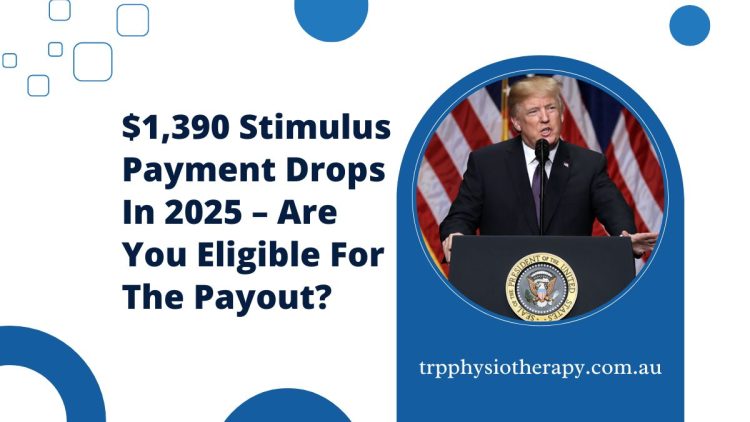Millions of Americans are set to receive a one-time $1,390 stimulus payment in 2025, offering a much-needed financial boost amid rising costs. If you’ve been wondering whether you’re eligible, how the payment works, and when the money hits your account — this guide breaks it all down for you.
What Is the $1,390 Stimulus Payment?
The $1,390 stimulus payment is part of a broader effort to provide economic relief to individuals and families impacted by inflation, cost-of-living increases, and pandemic aftershocks.
It is designed as a non-taxable one-time payment for qualifying recipients and will not affect your federal benefits or taxable income.
Who Is Eligible for the $1,390 Stimulus?
To receive the full $1,390 stimulus, you must meet the following eligibility requirements:
- Be a U.S. citizen or legal resident
- Have filed your 2023 federal tax return
- Fall under the following income limits:
- Single filers: Adjusted Gross Income (AGI) of $75,000 or less
- Married filing jointly: AGI of $150,000 or less
- Head of household: AGI of $112,500 or less
- Not be claimed as a dependent on someone else’s tax return
For those who exceed the income limits, the payment amount is gradually reduced and completely phases out at:
- $80,000 for single filers
- $160,000 for married couples
- $120,000 for heads of household
When Will the Payments Be Sent?
The government has set a distribution timeline beginning in May 2025. Most eligible recipients should expect to receive their payments within 4–6 weeks of that date, depending on how their tax information is filed.
| Payment Type | Delivery Method | Expected Timing |
|---|---|---|
| Direct Deposit | Bank account on file | Starting May 15, 2025 |
| Paper Check | Mailed to your address | Late May to Early June |
| Non-filers (eligible) | Via IRS portal or mailed | After filing confirmation |
How to Claim the $1,390 Stimulus Payment
If you’re eligible, there is no separate application. Payments will be issued automatically based on the information provided in your 2023 tax return. However, it’s important to:
- File your 2023 tax return (if not already done)
- Update your direct deposit and mailing information with the IRS
- Check your IRS account regularly to monitor payment status
For those who typically do not file taxes (such as low-income seniors or SSDI recipients), you may still be eligible — but you’ll need to submit basic information through the IRS non-filer tool or file a simplified return.
| Criteria | Requirement |
|---|---|
| Maximum Payment | $1,390 |
| Income Limit (Single) | $75,000 (phases out at $80,000) |
| Income Limit (Married) | $150,000 (phases out at $160,000) |
| Must File 2023 Tax Return? | Yes |
| Delivery Methods | Direct Deposit, Paper Check, IRS Portal |
| Payment Start Date | May 15, 2025 |
The $1,390 stimulus payment is on the way, bringing meaningful relief to millions of households across the country. Whether you’re a retiree, a worker with moderate income, or someone struggling to make ends meet, it’s crucial to ensure your tax return is filed, and your banking details are accurate.
This is your opportunity to benefit from the latest financial support — make sure you’re ready when the payments roll out in May 2025.
FAQs
Will the $1,390 payment affect my Social Security or SNAP benefits?
No. The stimulus payment is not considered income and will not impact your eligibility for government aid or benefits.
What if I didn’t file taxes but think I’m eligible?
You may still qualify. Submit your information through the IRS non-filer portal or file a 2023 return before the deadline.
Do I need to pay back the $1,390 stimulus?
No. This is a non-repayable payment meant to assist you with essential expenses.

